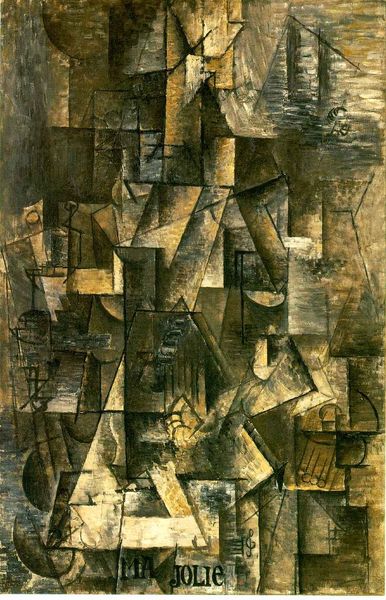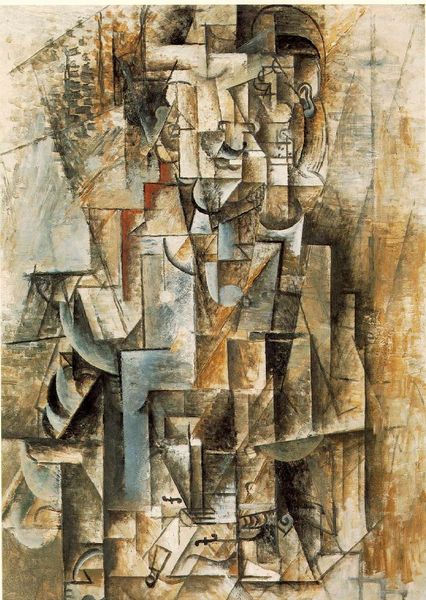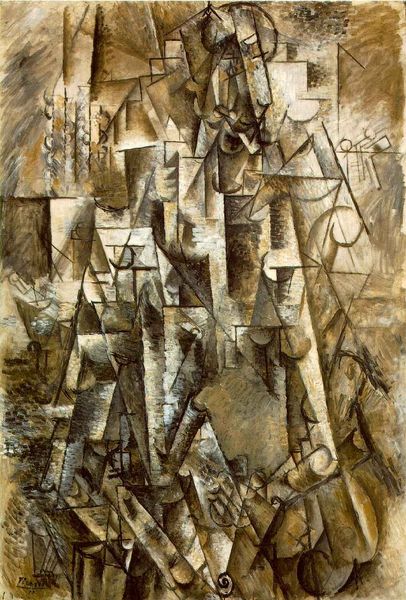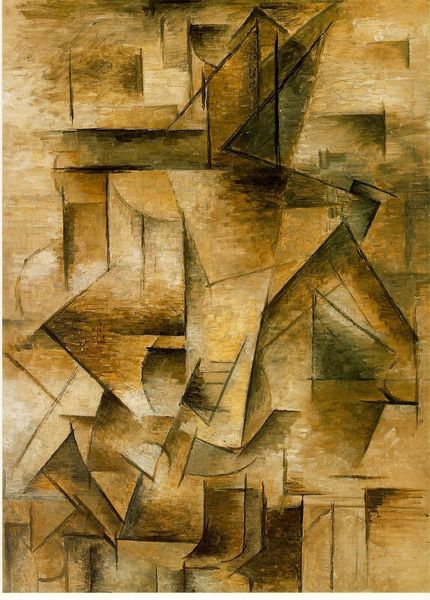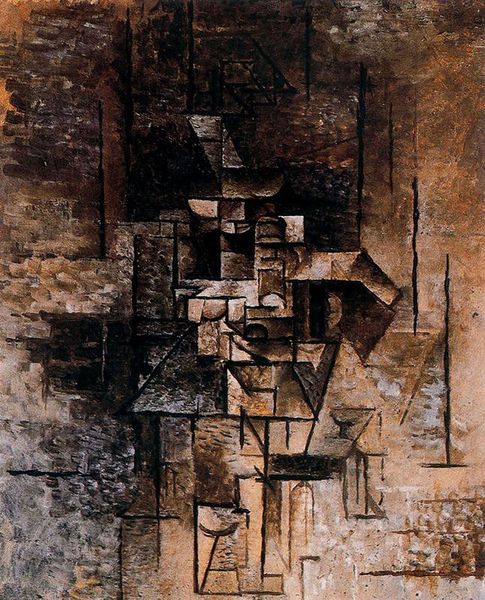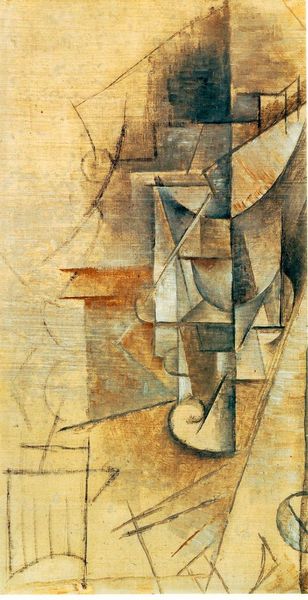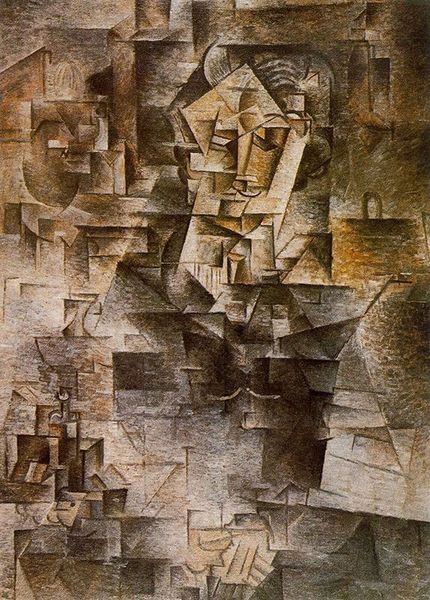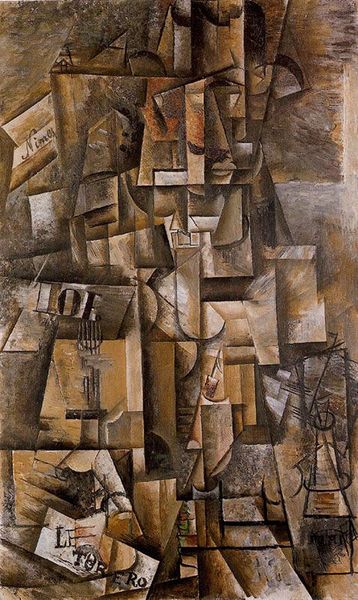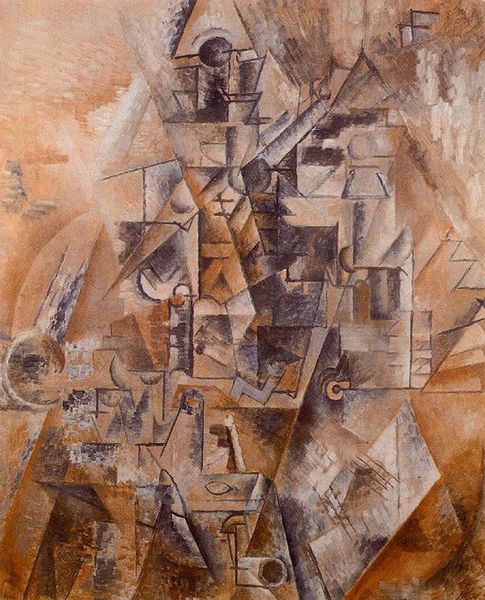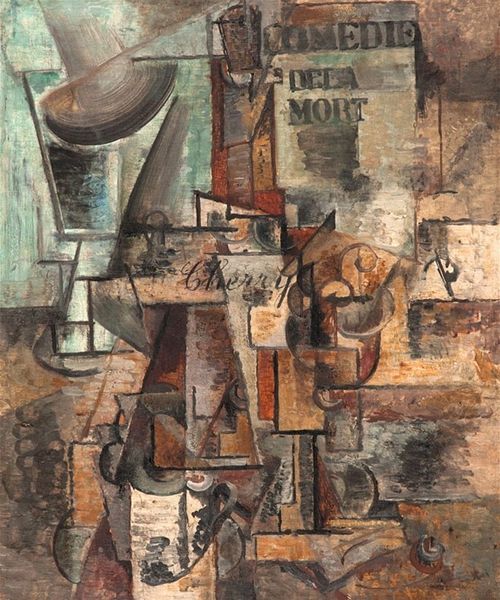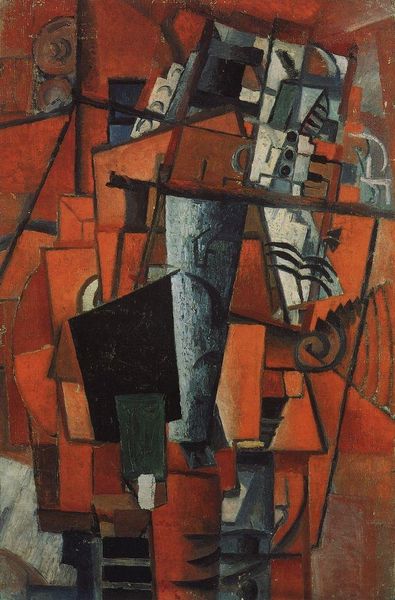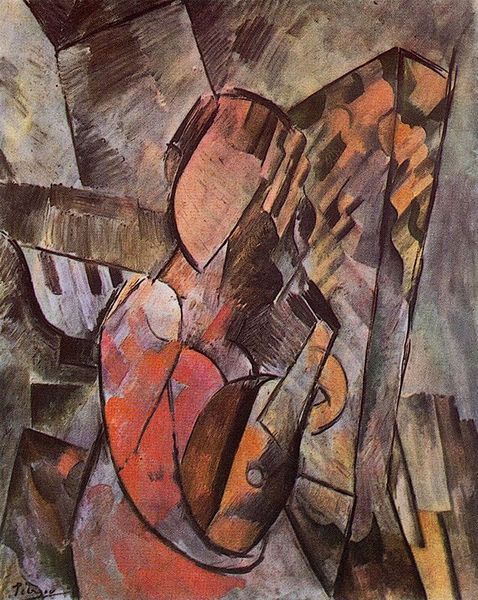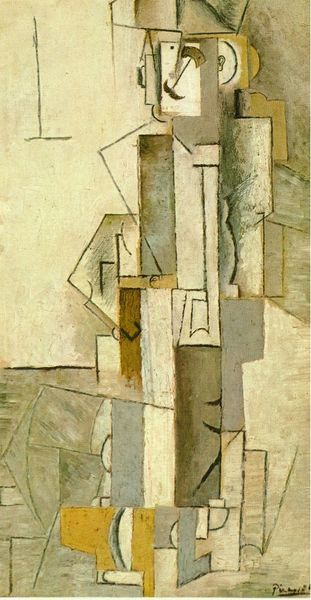
oil-paint
#
portrait
#
cubism
#
oil-paint
#
oil painting
#
geometric
Copyright: Public domain US
Curator: Painted in 1911, this is Picasso's "Clarinetist," rendered in oil on canvas. Editor: Well, that's certainly a clarinetist who's had a bit too much absinthe. It feels like a fever dream of angles. Curator: Exactly! It's quintessential Analytical Cubism. Note how the figure nearly dissolves into the background. Picasso fragments the form, presenting it from multiple viewpoints simultaneously. Editor: Right. You see how those warm ochres and browns –likely mixed with linseed oil, considering the sheen– echo across the whole canvas. But where did that come from and what materials went into mixing these colors and moving these panes across the work? It all alludes to the materials of modern industrial life as the image renders in visual panes. Curator: And yet, despite the fragmentation, you get a strong sense of a figure holding an instrument. It's not a literal depiction, it's something far more... felt. Editor: It does give a sense of the artist's presence – you can see the labour embedded in it and how this may change art. How materials have shaped human experience through color, line and mass. I wonder, what was the price of each color that day when Picasso brought them to mix on the panel? What colors cost what? This will determine much. Curator: You can almost hear the mournful sound of the clarinet, echoing through those fragmented planes, don’t you think? Picasso, like so many artists in Paris at that time, was obsessed with representing the unseen forces. What’s not rendered holds the same significance. Editor: Maybe the forces had more to do with mass consumer culture or the conditions of labor needed to build them... Picasso seems to only render in the most opaque colors and what he hides lies there, locked. The more he refuses access through geometric formalism, the greater his failure. Curator: It really is incredible how much he can suggest with so little descriptive detail. The painting makes you actively participate in the experience. It makes me wonder: if all colors disappeared from this painting one day, would it still evoke all that you can still sense in its form now? Editor: For me, understanding how artworks like this were actually made is crucial to challenging that ideal of pure aesthetic expression and recognizing art is always embedded in systems of labor and commerce. This work, which has now shifted from the artists’ material conditions to his “mournful echoes,” has simply removed any sense of real materiality from Picasso, a fraud and phony.
Comments
No comments
Be the first to comment and join the conversation on the ultimate creative platform.
